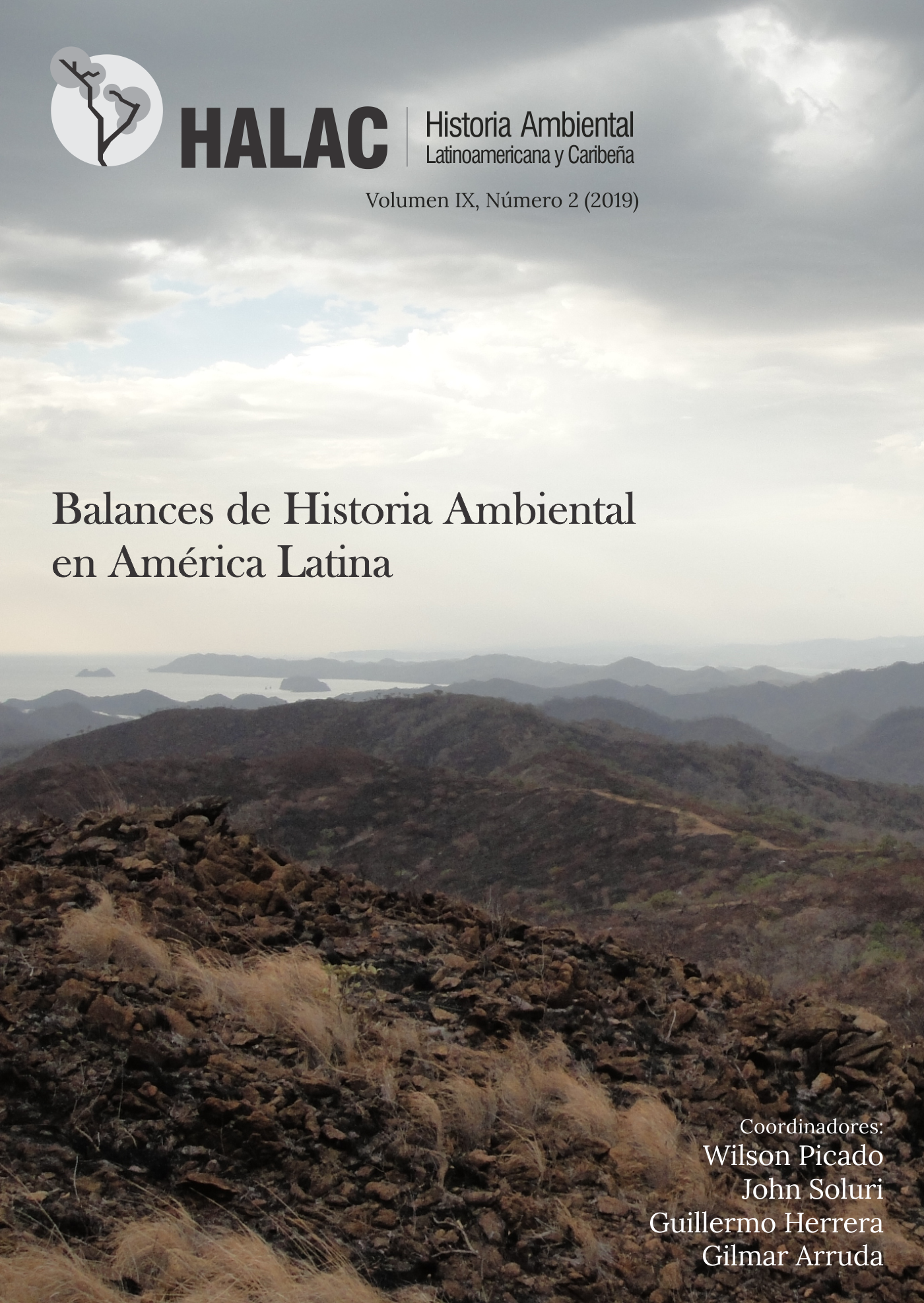From Serra dos Cavalos to Vale do Ipojuca (Caruaru/PE): water and environmental history in the brazilian Semiariate
DOI:
https://doi.org/10.32991/2237-2717.2019v9i2.p237-262Keywords:
Public supply, Water resources, Hydro-environmental managementAbstract
The urban nuclei in the Brazilian semiarid region present memories, trajectories, and stories of the dramaticity of water supply challenges. In the agreste of Pernambuco, the region with the largest water balance deficit in the state, lies the thirsty city of Caruaru, which in the period of a century (1916-1983) experienced the mishaps of hydration of expansion projects, initially from of the natural course of the river Ipojuca as the first source, later in the high sources of the Serra dos Cavalos. The disputes with different conceptions of solutions and the conflicts between the different uses left the marks in the way, in the relations of the different subjects with the waters. The article was elaborated based on normative documentary records of the municipality, journalistic texts, of local writers and in dialogues with reports of residents' memories through interviews in an approach from the perspective of Environmental History.
References
Brasil. Conselho Nacional de Recursos Hídricos – CNRH. Divisão Hidrográfica Nacional. 2003. Resolução n.º 32. Consultado 26/6/2019: http://www.cnrh.gov.br/divisao-hidrografica-nacional?tag=
Condé, José. 2011. Terra de Caruaru. 6. ed. Caruaru: W. D. Porto da Silva.
Creado, Eliana Santos Junqueira. 2014. Um fragmento de mata atlântica na capital de São Paulo: fronteiras instáveis entre natureza e uma megacidade. Curitiba: Appis.
Diniz, José Nilo Bezerra. 2018. Abastecimento de água no Brasil setentrional: a gestão hídrica em Aracati, século XIX. Água y Territorio, Jaén, (11):18-21, Ene.-Jun.
Falcão, Verônica. 2001. “Brejos ameaçados de desaparecer”. Jornal do Commercio, Recife, 25 mar. Consultado 14/6/2016: http://www.apoena.org.br/artigos-detalhe.php?cod=191.
Ferreira, Josué Euzébio. 2016. Do relevo e das paisagens até as águas. Caruaru. Digitado. Texto produzido para o Projeto Águas da Serra, 100 anos de História.
IBGE. 2010. Censo demográfico 2010. Rio de Janeiro. Consultado 26/6/2019: https://censo2010.ibge.gov.br/
IBGE. 2017. Censo agro 2017. Rio de Janeiro. Consultado 26/6/2019: https://censos.ibge.gov.br/agro/2017/
Leitão, Azael. 1949. Um homem e uma época. [S. l: s. n.:].
Mello Netto, Antônio Vieira de, Rachel Caldas Lins, and Solange Fernandes Soares Coutinho. [1990]. Áreas de exceção do Nordeste brasileiro: considerações conceituais. Consultado 6/4/2016: http://observatoriogeograficoamericalatina.org.mx/egal3/Geografiasocioeconomica/Geografiaagricola/01.pdf.
Marques, Josabel Barreto. 2012. Caruaru, ontem e hoje: de fazenda a capital. Recife: Edição do Autor.
Molina, Letícia Gorri. 2014, jul./dez.. “Estudos da memória”: em foco uma discussão teórica da importância de suas diferentes abordagens. PerCursos, Florianópolis, 15(29):7-38.
Muniz, Lenir. 2009. “Ecologia política”: O campo de estudo dos conflitos socioambientais. Revista Pós Ciências Sociais, 6(12):181-196.
Odum, Eugene P., and Gary W. Barrett. 2011. Fundamentos de ecologia. 5. ed. São Paulo: Cengage.
Pernambuco. Secretaria de Ciência, Tecnologia e Meio Ambiente. Plano Estadual de Recursos Hídricos – PERH-Síntese. Documento Síntese. Recife, 1998.
Toledo, Vítor, and Narciso Barrera-Bassols. 2015. A memória biocultural: A importância ecológica das sabedorias tradicionais. São Paulo: Expressão Popular.
Santos, Carlos Fernando. 2015. Os índios nos vales do Pajeú e São Francisco: Historiografia, legislação, política indigenista e os povos indígenas no Sertão de Pernambuco (1801-1845). Dissertação de Mestrado em História. Recife, UFPE. Consultado 16/6/2019: https://repositorio.ufpe.br/handle/123456789/14933
Silva, Edson. 2016. História indígena e história socioambiental no semiárido pernambucano: os Xukuru do Ororubá. Anais do I CONIDIS. 2016. Consultado 2/3/2017: www.editorarealize.com.br/revistas/conidis/anais.php
Souza, Marcos, and Vládia Oliveira. 2006. “Os enclaves úmidos e subúmidos do semiárido do Nordeste brasileiro”. Mercator: Revista de Geografia da UFC. 86-102. Consultado 6/4/2016: www.passeidireto.com/arquivo/2640195/os-enclaves-umidos-e-subumidos-do-semi-arido-do-nordeste-brasileiro.
Downloads
Published
How to Cite
Issue
Section
License
This journal offers immediate free access to its content, following the principle that providing free scientific knowledge to the public provides greater global democratization of knowledge.
As of the publication in the magazine the authors have copyright and publication rights of their articles without restrictions.
The HALAC Magazine follows the legal precepts of the Creative Commons - Attribution-Non-Commercial 4.0 International license. 




